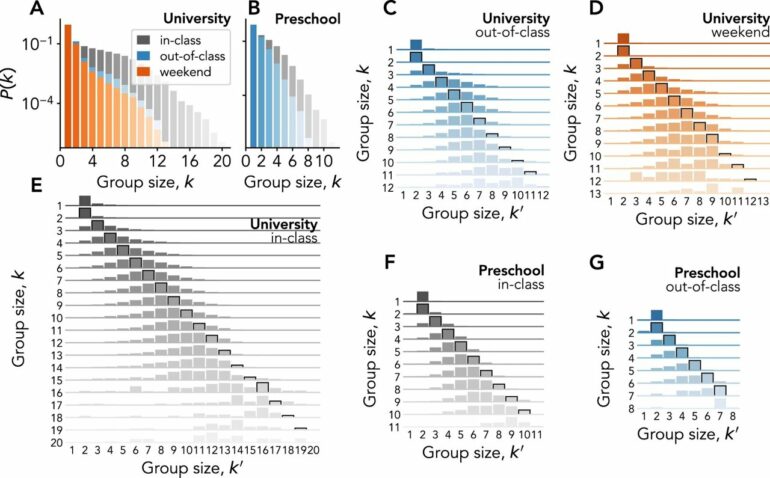A recent study published in Nature Communications uncovers how human social interactions evolve in group settings, providing a perspective on the dynamic nature of social networks. By analyzing how university students and preschool children form and dissolve groups in different environments, the research sheds light on the subtle, yet structured patterns that underlie human social behavior.
Authored by network scientists Iacopo Iacopini (Associate Professor, Network Science Institute, Northeastern University London), Marton Karsai (Associate Professor, Department of Network and Data Science, Central European University (CEU)) and Alain Barrat (C.N.R.S. Senior Research Scientist), the study reveals that people tend to stick with groups of similar sizes over time.
However, as the size of the group increases, individuals are more likely to move into smaller groups. These patterns remain strikingly consistent across various contexts, including structured, teacher-led classroom settings and informal, free-choice periods such as recess or after-school activities.
How people form and break groups
The research looked at two different environments: a university campus and a preschool. By examining interactions in in-class, out-of-class, and weekend settings, the researchers observed how people transitioned between groups. This offered insights into how humans shift their social connections depending on the context.
In structured environments, like classrooms, social groups are often influenced by external constraints, such as the teacher’s instructions. However, outside of these formal settings, individuals had more freedom to interact, which led to different, often smaller group formations. This suggests that while external factors play a role in how groups are formed, underlying social behaviors, like the preference for smaller groups, remain consistent.
Why it matters
Beyond revealing the patterns of how groups change over time, the study also explored the idea of “burstiness”—periods of high social activity followed by long periods of inactivity. This phenomenon was especially evident in smaller groups, where interactions were more intense and often lasted longer.
“These findings hold important implications for areas like education, group management, information dissemination, or epidemiology, where understanding how people connect and disconnect in social settings could lead to more effective strategies for fostering collaboration and well-being,” said CEU Associate Professor Marton Karsai.
“Our findings reveal that even in highly structured environments like classrooms, the fundamental ways in which people connect remain the same. We all tend to gravitate toward certain group sizes, and understanding this could help improve everything from learning outcomes in schools to group dynamics in the workplace,” Karsai added.
More information:
Iacopo Iacopini et al, The temporal dynamics of group interactions in higher-order social networks, Nature Communications (2024). DOI: 10.1038/s41467-024-50918-5
Provided by
Central European University
Citation:
How social interactions evolve in schools: Study reveals people tend to gravitate towards groups of similar sizes (2024, October 28)



